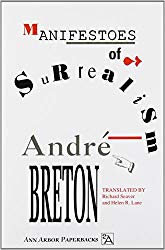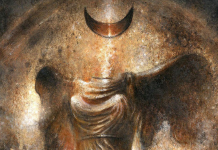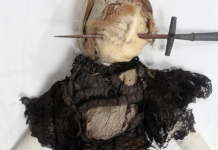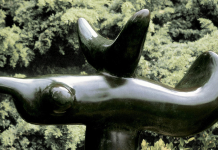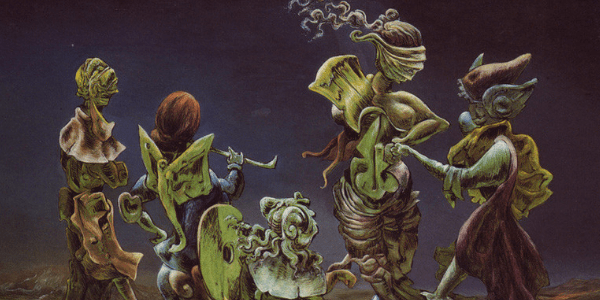
In “Introduction to Surrealism: An occultnik art movement,” I gave a brief overview of what surrealism is and how it came to be.
As with any other art movement, there are certain artists that have had an incredible impact. Some surrealist have created pieces that could be classified under the realm of the occult, and surrealism itself could be classified as an occult movement, as it explores the hidden creativity of the mind.
There are a considerable number of surrealists involved with the occult, so I will break it into two articles. This one focuses on painters and writers, and the next one will focus on sculptures, photographers, and contemporary surrealists who keep the movement alive.
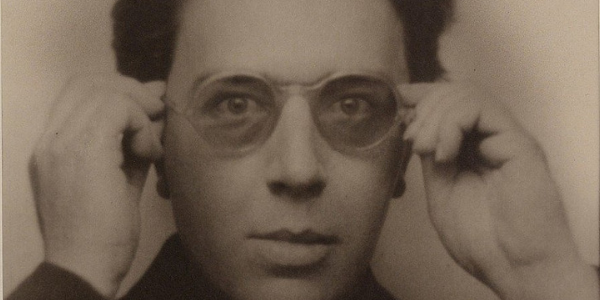
Andre Breton
Surrealists used the magick of art and literature to open “hidden portals in the mind,” as Celia Rabinovitch so eloquently wrote in “Through the mirror of magic,” the guest essay for the online exhibition hosted by Cornell University. They used creative force as a tool to rebel against the society of reason and religions that restricted the human mind.
Andre Breton, the founder of Surrealism, was a prolific writer. His pieces created the foundation upon which Surrealism was built. In the Manifesto of Surrealism (1924), André Breton wrote:
We are still living under the reign of logic… Under the PRETENSE of civilization and progress, we have managed to banish from the mind everything that may rightly or wrongly be termed superstition, or fancy; forbidden is any kind of search for truth which is not in conformance with accepted practices… A part of our mental world has been brought back to light.
In 1929 Breton published the Second Manifesto of Surrealism, he called for the occultation of surrealism. He also declared that the members reject all forms of religion:
Everything remains to be done, every means must be worth trying, in order to lay waste to the ideas of family, country, religion.”1
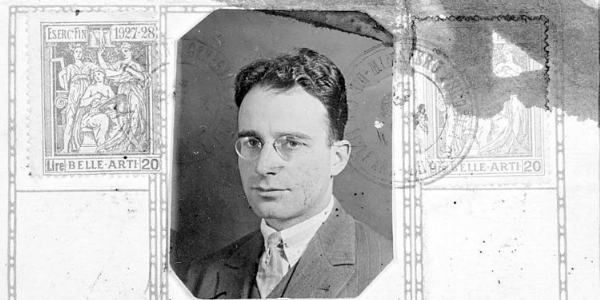
Kurt Seligmann
No article on the occult aspect of surrealism would be complete without dedicating at least a paragraph to Kurt Seligmann. Even though he was exiled from the movement when he and Andre Breton had a disagreement over the meaning of a tarot card, Seligmann was one of the most influential occultnik surrealists.
Seligmann had a great deal of wealth and used this money to explore the world, experiencing first-hand the magick of other cultures. In 1936, Seligman gained experience and knowledge about mana, taboo, and totems from a journey in Tahiti, and from exploring the monumental totems of the Tsimshian people of British Columbia, Canada. He wrote about his excursions in a 1939 essay that was published in the surrealist review Minotaure.
In addition to his travels, Seligman amassed a massive library devoted to the occult — without which the 2014 exhibition at Cornell University would not have been able to execute their show Surrealism and Magic. The guest essayist of the exhibition, Celia Rabinovitch, provided in-depth analysis of the magic of surrealist art in “Surrealism through the mirror of magic.” I must admit that it was “Surrealism through the mirror of magic” that inspired me to create the surrealism series for my art column.2
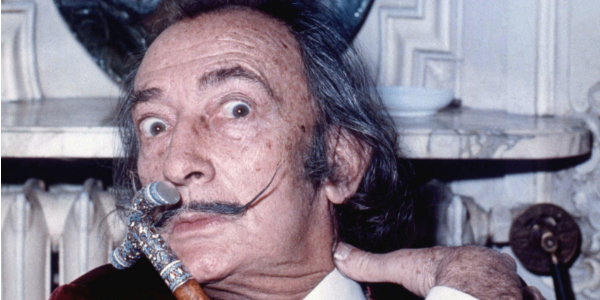
Salvador Dali
One of the most iconic paintings of the 20th century is The Persistence of Memory — often referred to as “the melting clock painting.” This is a classic surrealist piece, in that it makes the viewer cock their head and tap their chin in contemplation.
While Salvador Dali‘s piece may not be intentionally magical, it enchants the mind. It truly makes people reconsider their concept of time, and to evoke something so powerful in viewers is magick.3
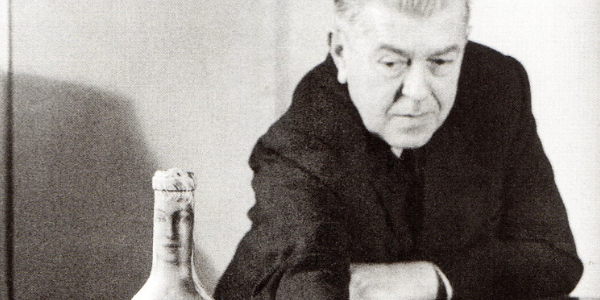
Rene Magritte
Who hasn’t at least seen the painting of the man with a large piece of fruit hiding his face? The Son of Man was Rene Magritte’s self portrait. This piece speaks to something characteristic of most, if not all humans: We always want to see what is hidden. We yearn to learn more, see more, feel more. While talking about this painting, Magritte said:
We always want to see what is hidden by what we see. There is an interest in that which is hidden and which the visible does not show us. This interest can take the form of a quite intense feeling, a sort of conflict, one might say, between the visible that is hidden and the visible that is present. ((Ibid.))
While he didn’t include this as part of the meaning of the painting, I think Magritte also points out the tendency of people to hide their true identities — to put a mask on, so to speak — by hiding his face behind the apple. We are either ashamed or too afraid to reveal who we really are.
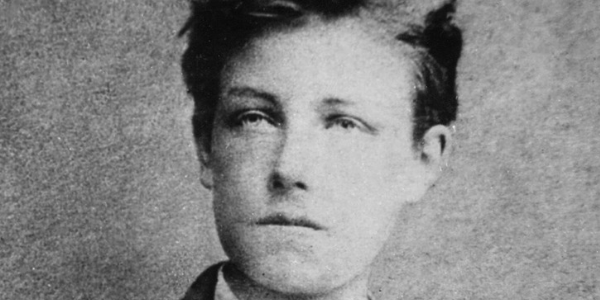
Arthur Rimbaud
Rimbaud was a poet who believed that an artist should do whatever they must to break free from the constrictions of logic and reason. Once the shackles of logical and reasonable thinking are shed, the poet will be able to access the mysterious realms beyond the physical world perceived with the bodily senses.
Although Arthur Rimbaud was technically a proto-surrealist, or a symbolist, I felt it was important to include him in this article. He influenced the artistic communities not only of his time, but on the ones that followed as well — his words touched artists well into the 20th century (and the 21st, as the following quote alone had an impact on me). Rimbaud was quoted saying:
The Poet makes himself a seer by a long, immense, and rational dissoluteness of all the senses. All the forms of love, of suffering, of madness; he searches himself, he consumes all the poisons in him, to only keep their quintessences. Inexpressible torture where he needs all the faith, all the superhuman strength, where be becomes, above all others, the great patient, the great criminal, the great accursed—and the supreme Savant!—For he arrives at the unknown! Because he has cultivated his soul, already rich, more than anyone else! He reaches the unknown, and when, terrified, he ends up by losing the meaning of his visions, at least he has seen them!4
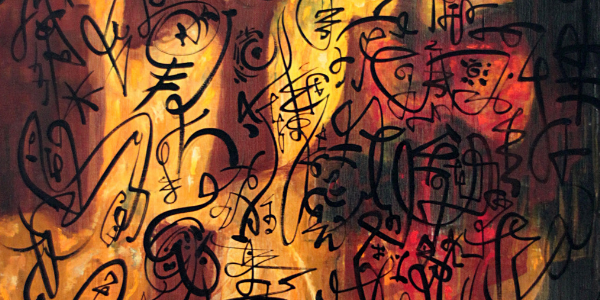
André Masson
Andre Masson was one of Breton’s most avid followers. Artnet.com refers to Masson as the “bridge between Surrealism and Abstract Expressionism.” Rumour has it that his work titled Pasiphae inspired Jackson Pollock when he saw it in the Buscholz Gallery in 1976.
Masson is an important artist to recognize, especially when looking at surrealism from an occultnik perspective. We know from my previous articles that automatism is a popular technique amongst surrealists, as it’s believed to bypass the rhyme and reason of the conscious mind and tap in to the flow of creativity that’s hidden deep within the mind. The article “Andre Masson’s Tortured and Sensuous Automatic Drawings,” by Jason Nechtval, claims that “Masson is generally considered to have pioneered the automatic drawing technique with an opulence that borders on the decadent.”5
Masson favoured the technique because he felt that it was the best way for creativity to escape from the unconscious.
Final Thoughts
These surrealist artists opened doors to other realms through the use of a paintbrush, pen or typewriter. They forced people to look within themselves when looking upon their work, and that is the motivating factor behind surrealism. I classify this movement as occultnik, because it strives to reveal that which is hidden. Witches have their tarot cards, shamans go on journeys, and surrealists display their innermost thoughts and secrets on canvas or in manuscripts.
Some artists’ paintings were magical in that they enchanted the viewers. The use of colour, juxtaposition, jarring subjects were sometimes terrible to behold, but possess a magnetism that prevents viewers from looking away.
In elementary school, my art teacher told us that art is a creative expression designed to evoke an emotional response. She encouraged us to use any medium on hand, and our goal was to make our viewers feel sad, happy, excited — basic emotions that eight-year-olds could understand. I think there was something to her lessons, though. I think the goal of surrealist work is to evoke an emotional response, one that brings forth feelings that viewers would rather keep hidden away in the darkness of their Shadow.
Image credits: Initiation by Kurt Seligmann, Son of Man by Rene Magritte, Corrida mythologique by Andre Masson
-
CELIA Rabinovitch, “Surrealism Through the Mirror of Magic,” Surrealism and Magic Online Exhibition, Cornell University Library,
2014. [↩] - Ibid. [↩]
- “Surrealism Art: Seven Famous Surrealist Artists And Their Most Iconic Paintings,” All That’s Interesting, 1 February 2018. [↩]
- AARON Piccirillo, “5 Legendary Artists and Writers Into Mysticism and the Occult,” Ultra Culture, 6 November 2015. [↩]
- The Art Story contributors, “Surrealism Movement Overview and Analysis,” The Art Story, accessed 23 November 2018. [↩]


